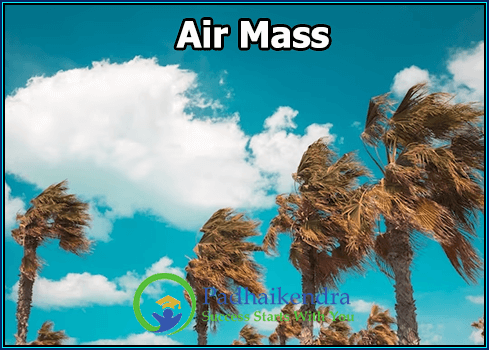An air mass is a large body of air that has similar temperature and humidity characteristics throughout its entire volume. Air masses can cover vast areas, sometimes spanning entire continents, and they play a critical role in the formation of weather patterns and the distribution of precipitation around the world.
The characteristics of an air mass are determined by the location and characteristics of its source region. For example, an air mass that originates over the tropical oceans will be warm and humid, while an air mass that originates over the polar regions will be cold and dry.
Air masses are classified according to their source region and the type of surface over which they travel. The most common air mass types include:
- Continental Arctic (cA): This air mass originates over the polar regions and is very cold and dry.
- Continental Polar (cP): This air mass originates over the land in polar or high-latitude regions and is cold and dry.
- Maritime Polar (mP): This air mass originates over the oceans in polar or high-latitude regions and is cold and humid.
- Continental Tropical (cT): This air mass originates over the land in tropical regions and is warm and dry.
- Maritime Tropical (mT): This air mass originates over the oceans in tropical regions and is warm and humid.
When air masses with different characteristics meet, they can interact to create weather fronts, such as cold fronts, warm fronts, and stationary fronts. These fronts can produce a wide range of weather phenomena, including thunderstorms, tornadoes, and heavy precipitation.
Air masses are also influenced by regional winds and pressure systems, which can cause them to move across vast distances and impact weather patterns around the world. Understanding the characteristics and movements of air masses is crucial for predicting weather patterns and managing the impacts of severe weather events.





